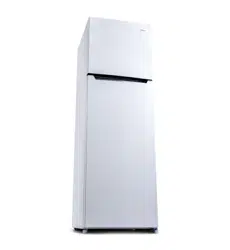Loading ...
Loading ...
Loading ...

9
Temperature inside the
refrigerator is too warm.
Temperature control is set incorrectly. Turn the control
to a cooler setting and allow several hours for the
temperature to stabilize.
Change freezer air flow setting to min position.
Door is kept open too long or is opened too frequently.
Warm air enters the refrigerator every time the door is
opened). Open the door less often.
The door is not closed completely.
The door gasket does not seal properly.
Temperature inside the
refrigerator is too cold.
Freezer control incorrectly set. Set back to mid position.
Temperature control is set too cold. Turn the control to a
warmer setting and allow several hours for the
temperature to stabilize.
Temperature of external
refrigerator side walls are
warm.
The exterior refrigerator walls can be as much as 15-20
degrees warmer than room temperature.
This is normal while the compressor works to transfer
heat from inside the refrigerator cabinet to the condenser
behind the refrigerator side walls.
Popping or cracking sound
when compressor comes on.
Metal parts undergo expansion and contraction, as in
hot water pipes. This is normal. Sound will level off or
disappear as refrigerator continues to run.
Bubbling or gurgling sound,
like water boiling.
Refrigerant (used to cool refrigerator) is circulating
throughout the system. This is normal operation.
Vibrations.
Check the refrigerator is on a level/even surface.
Refrigerator rocks on the floor when it is moved slightly.
Be sure floor can adequately support refrigerator.
Level the refrigerator by putting wood or metal shims
under part of the refrigerator.
The refrigerator is touching the wall. Re-level the
refrigerator and move it from the wall. See “Installation
Instructions”.
Moisture forms on inside
refrigerator walls.
Weather is hot and humid, which increases internal rate
of frost build-up. This is normal.
Door is slightly open.
Door is kept open too long, or is opened too frequently.
Open the door less often.
The door is not sealed properly.
Moisture forms on outside
of refrigerator.
Door is slightly open, causing cold air from inside the
refrigerator to meet warm moist air from the outside.
Loading ...
Loading ...
